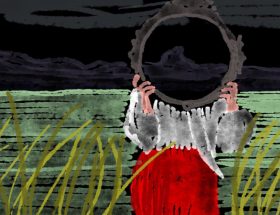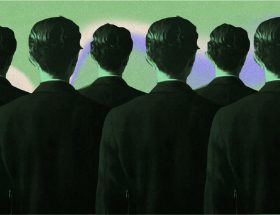Growing up in India, a former colony, I, like most children around me, was encouraged to read stories written by English authors before being exposed to most other kinds of written literature. Whilst those stories no doubt were interesting, one distinctive feature that stood out in almost all of them was small talk about the weather. The celebration of summer and the repeated use of the expression ‘a delightful warm sunny day’ always got me thinking; why would anyone celebrate the sun being out in June? What is so special about the sun being out? Don’t these characters feel hot? Why are they so bothered by the rain? Is there something wrong with them? Because it was such a small detail in the larger storyline, it wasn’t brought up. When I grew slightly older however, I realised that the experience was common to many of my peers, even my parents and grandparents; a collective, albeit minor, cultural shock. When I visited London for the first time, I got a small glimpse of why those books celebrated all that sunlight. By the time I moved to Scotland for University, I became the person who celebrated ‘warm sunny days’. I celebrated them by wearing a dress, going for a walk, drinking something cold, and not doing any work at all. When it’s sunny 250 days of the year, the rain brings relief. But when it’s rainy and cold most of the time, the sun is something to celebrate!
The weather is as personal as your sense of style or the food you like. If weather preferences count as personality traits, do they remain constant across contexts? Can the same natural occurrence seem beautiful in one context and elicit opposing emotions in the other? I’ve come to realise that it can.

The rain in Scotland is dreadful to say the least. I don’t recall a single time when it has started raining here, and I’ve been happy about it. It’s always an inconvenience that ruins plans. Most of the time it’s a slow, but constant trickle. What characterises it best however, is unpredictability; it can appear out of nowhere, at any time on any day, even if the forecast indicates otherwise. One could be walking on the street on the sunniest day of the year, looking up at the clearest blue skies. But you step into a cafe to get yourself a cup of coffee, and when you come out, it could be dark and raining. Or it could be bright and still be raining. The only thing that can save you from the torrents of wind is being indoors and having a great heating system. But being out will always result in getting late, getting drenched, or getting severely ill. But perhaps, if I checked the forecast, carried an umbrella or wore a raincoat, I wouldn’t dislike the rain so much?
In Delhi, everything is different. Regardless of when it arrives, the rain brings a sense of joy, moments of silence. That is not to say that there are no downsides. In heavy rain, the streets tend to get water logged and if you’re sitting in a car, chances are that you’ll be stuck in traffic for a long long time. Yet, it’s impossible not to want to pull down the windows and smile as the breeze and soft droplets hit your fingertips. At home, we turn off all our lights and open the curtains and doorways. We watch the surrounding trees sway with the wind, leaves sounding, breaking into a rhythmic shimmy. Sometimes, I go out onto the balcony and listen to the raindrops falling. I sit there, with a hot and slightly spicy cup of chai. From the balcony at the front of the house, I can see an old man sitting underneath a blue tarpaulin shelter roasting corn on an open flame. He plays old Hindi music on his smartphone. He has been occupying the same spot across our house, year after year during the monsoon. He used to use an old transistor till sometime back.
The monsoon season hits Delhi early July. After the sweltering heat of June, 47 degrees, unbearably dry, the cooling breeze and rain is a relief for everyone alike. The first rains are celebrated across the country. In northern India, it is called ‘Saavan’ (Monsoon). In rural areas, the festivities include multiple traditional activities. Everyone dresses in green, there are massive wooden swings put up on peepal trees across the village. Hands are adorned with henna, people visit the temple, and gather in groups. The ceremonies connote joy and gratitude for the water. Whilst I have never celebrated in this way, as a young child I spent countless afternoons out in the park, getting drenched with neighbourhood friends. We used to run around with no shoes on, play hide and seek, sing songs, do our fair share of mud slinging. It always made me feel like I was the main character in a Bollywood movie.
Perhaps, memories and context define our emotional reactions towards natural phenomena more than we realise. We are conditioned to feel certain things depending on where we come from and what we have experienced. We learn to form associations, and those associations stay.





